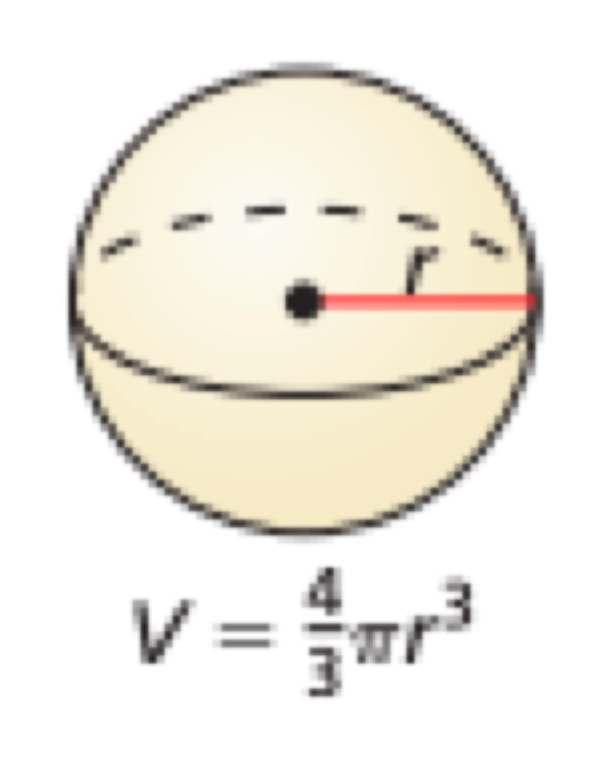Chapter 10 Vocab
1/31
There's no tags or description
Looks like no tags are added yet.
Name | Mastery | Learn | Test | Matching | Spaced |
|---|
No study sessions yet.
32 Terms
Circumference of a Circle
C=2πr or C=πd
Arc Length
In a circle, the ratio of the length of a given arc to the circumference is equal to the ratio of the measure of the arc to 360°. Arc length of arc AB / 2πr = m arc AB / 360
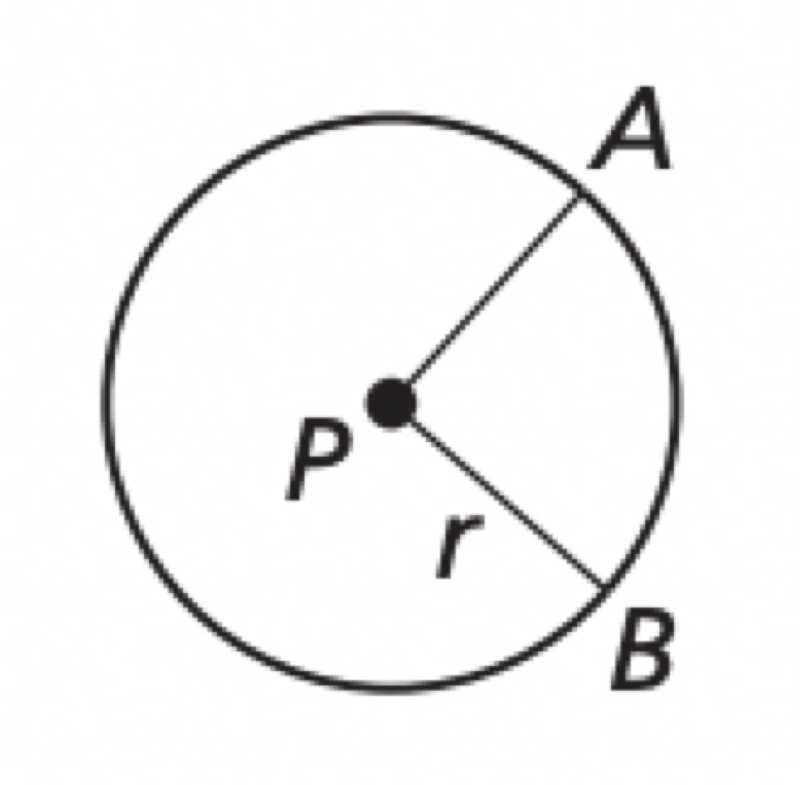
Radian Measure
The constant of proportionality, m arc CD / 360 • 2π, is defined to be the _____ ______ of the central angle associated with the arc
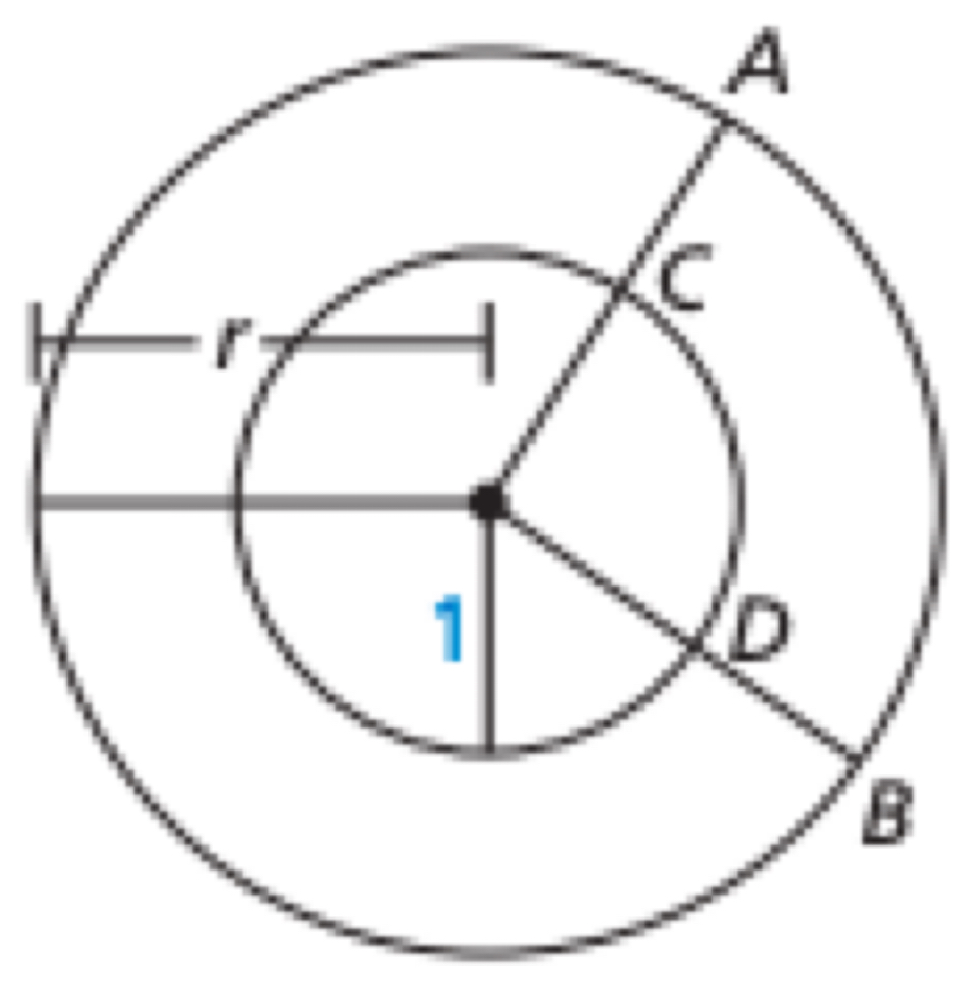
Converting Degrees to Radians
Multiply degree measure by π radians / 180°
Converting Radians to Degrees
Multiply radian measure by 180° / π radians
Area of a Circle
πr²
Population Density
How many people live in a given area. Number of people / area of land
Sector of a Circle
The region bounded by two radii of the circle and their intercepted arc. In the diagram below, sector APB is bounded by AP, BP, and arc AB

Area of a Sector
The ratio of the area of a sector of a circle to the area of the whole circle (πr^2) is equal to the ratio of the measure of the intercepted arc to 360°. Area of sector APB / πr^2 = m arc AB / 360, or Area of sector APB = m arc AB / 360 • πr²
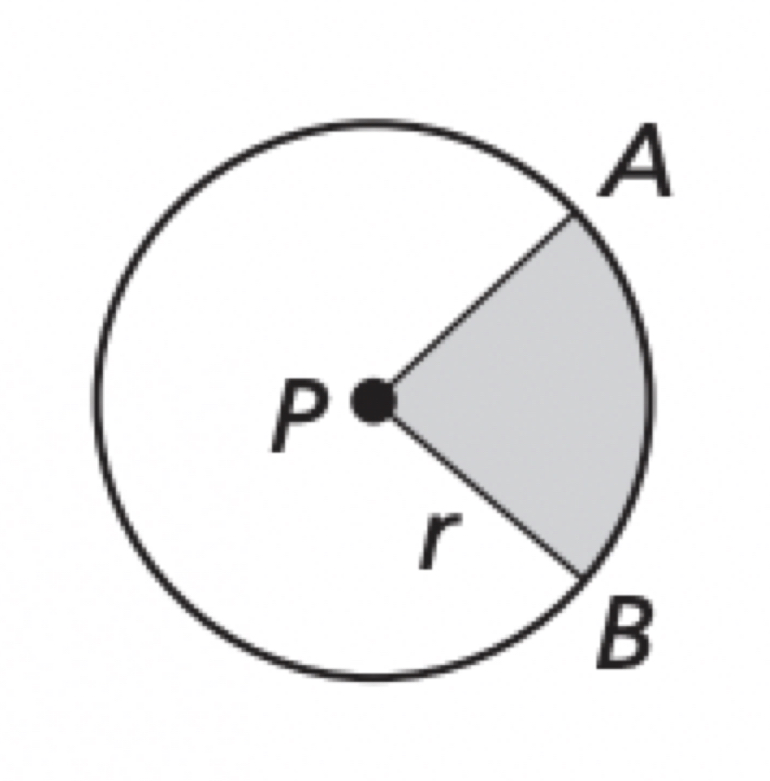
Area of a Rhombus or Kite
The area of a rhombus or kite with diagonals d1 and d2 is ½ • d1 • d2

Center and Radius of a Regular Polygon
The center and radius of its circumscribed circle
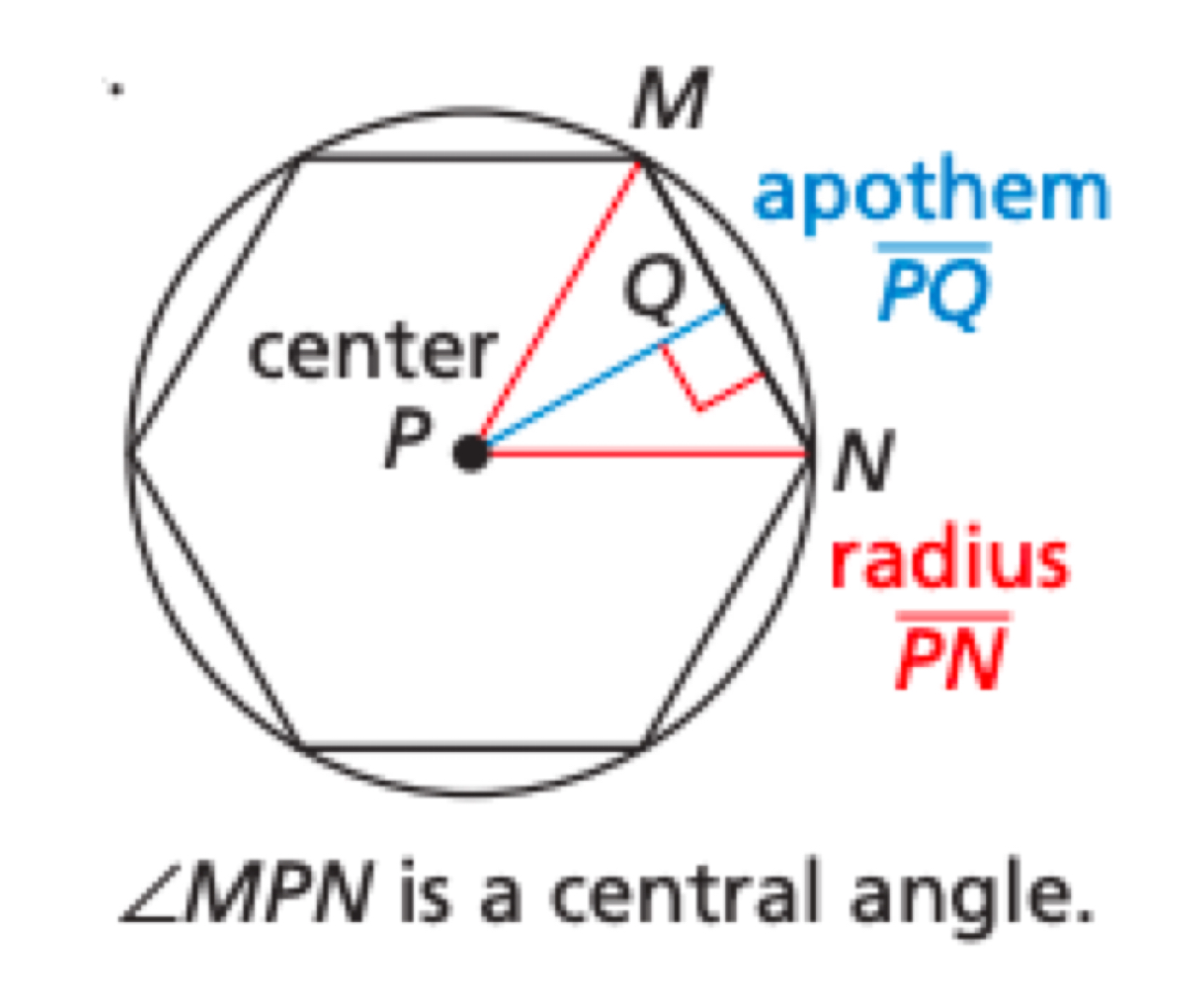
Apothem of a Regular Polygon
The distance from the center to any side of a regular polygon, the height to the base of an isosceles triangle that has two radii as legs, refers to a segment as well as a length
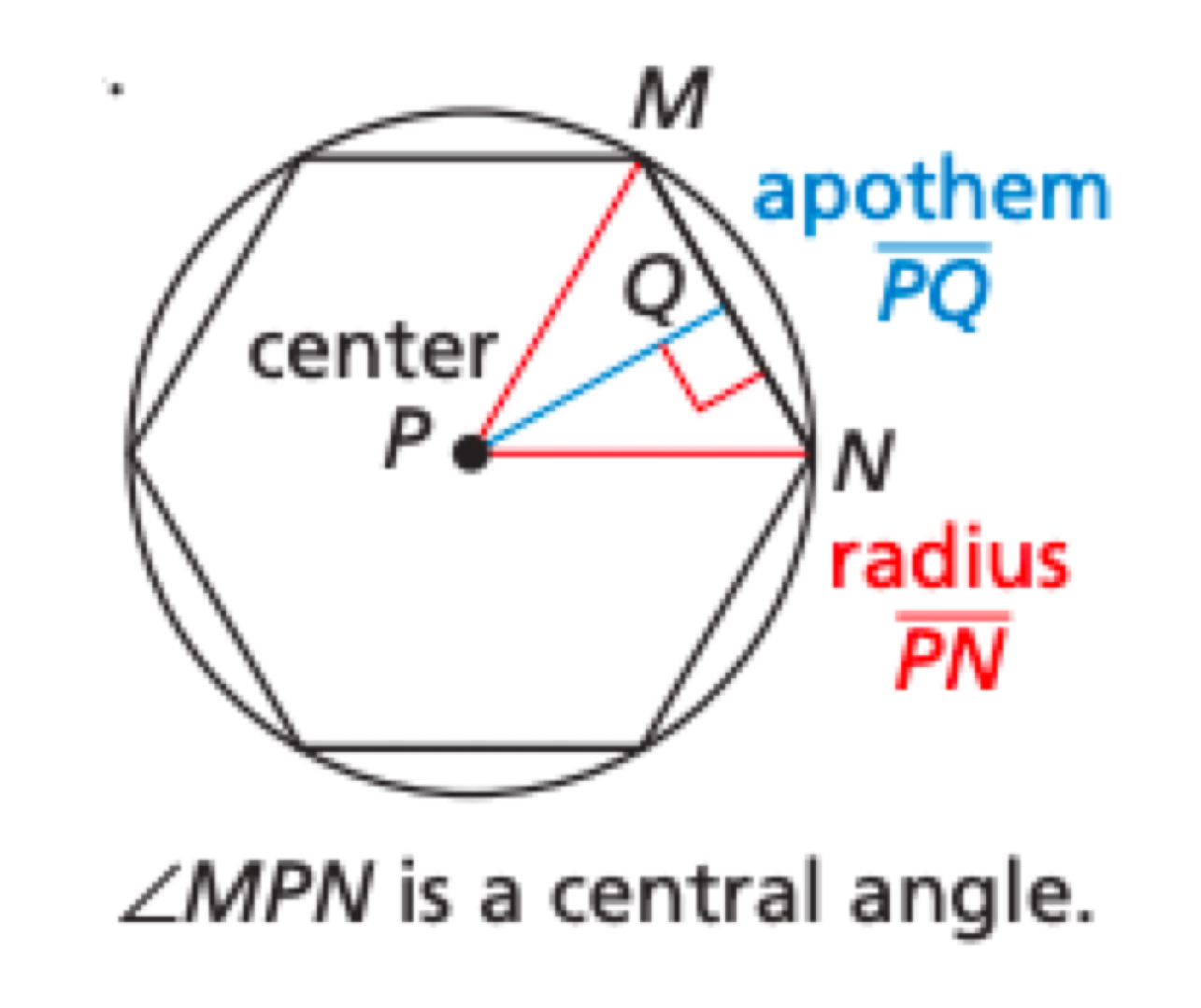
Central Angle of a Regular Polygon
An angle formed by two radii drawn to consecutive vertices of the polygon. To find the measure of each central angle, divide 360º by the number of sides.
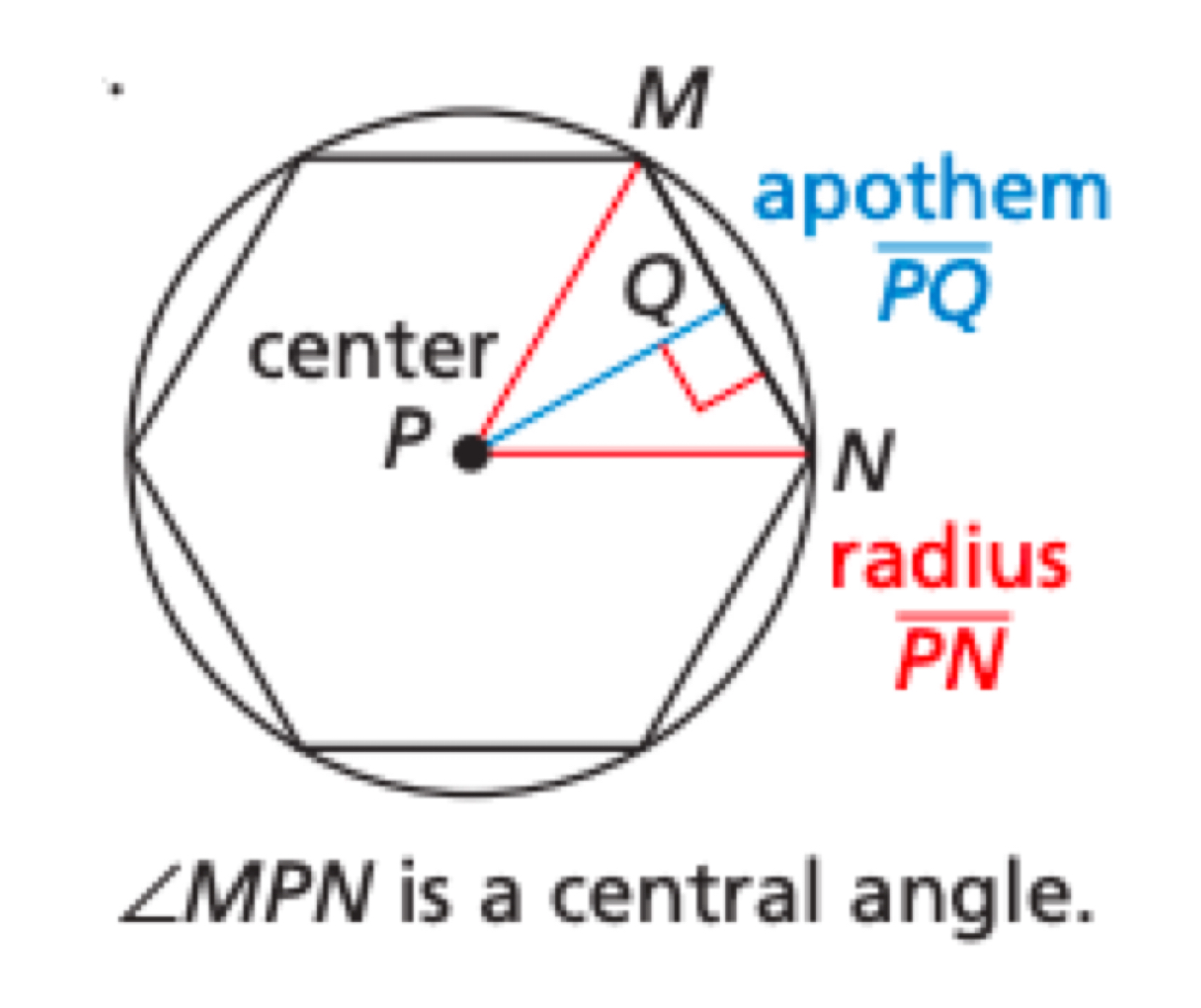
Area of a Regular Polygon
The area of a regular n-gon with side length s is one-half the product of the apothem a and the perimeter P. A = 1/2aP, or A = 1/2a • ns
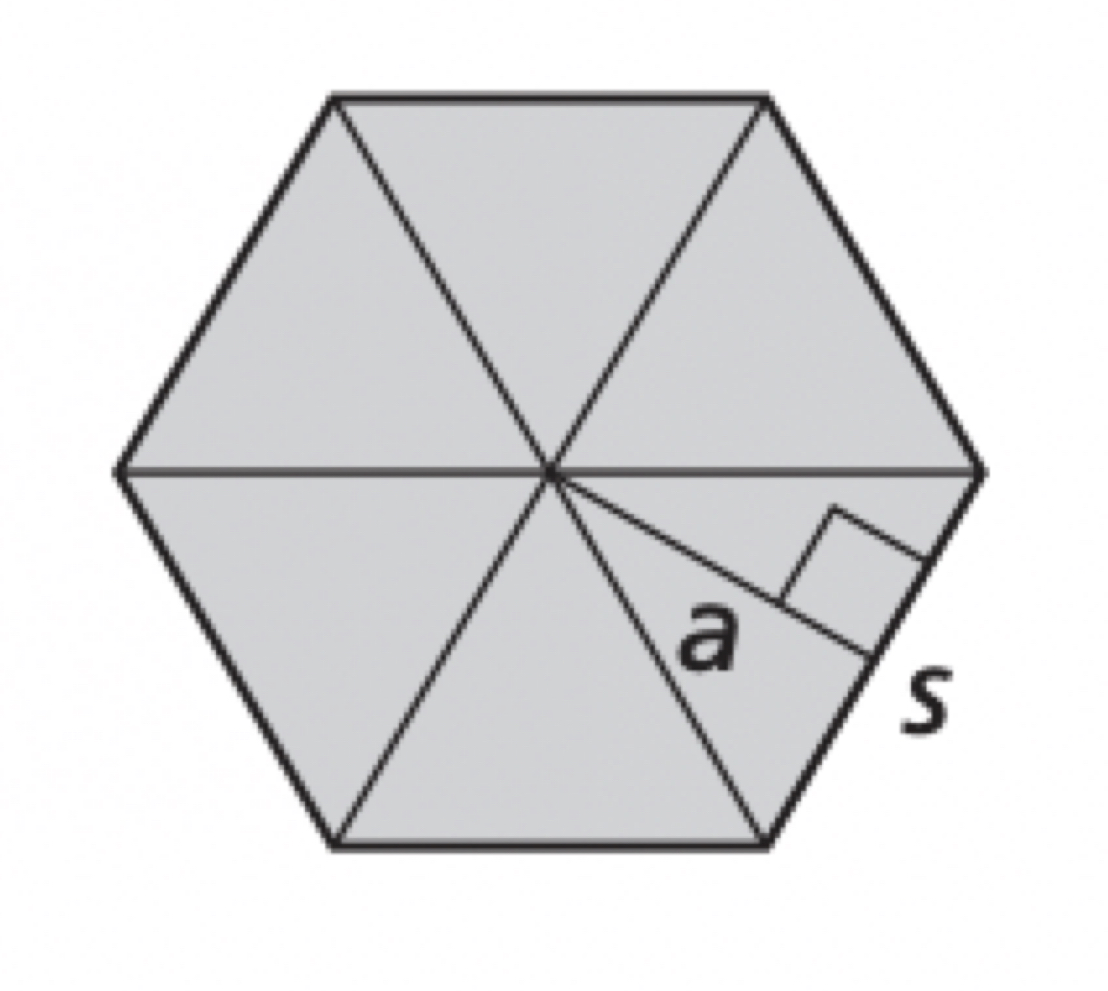
Polyhedron
A solid that is bounded by polygons, called faces. Plural: polyhedra or polyhedrons
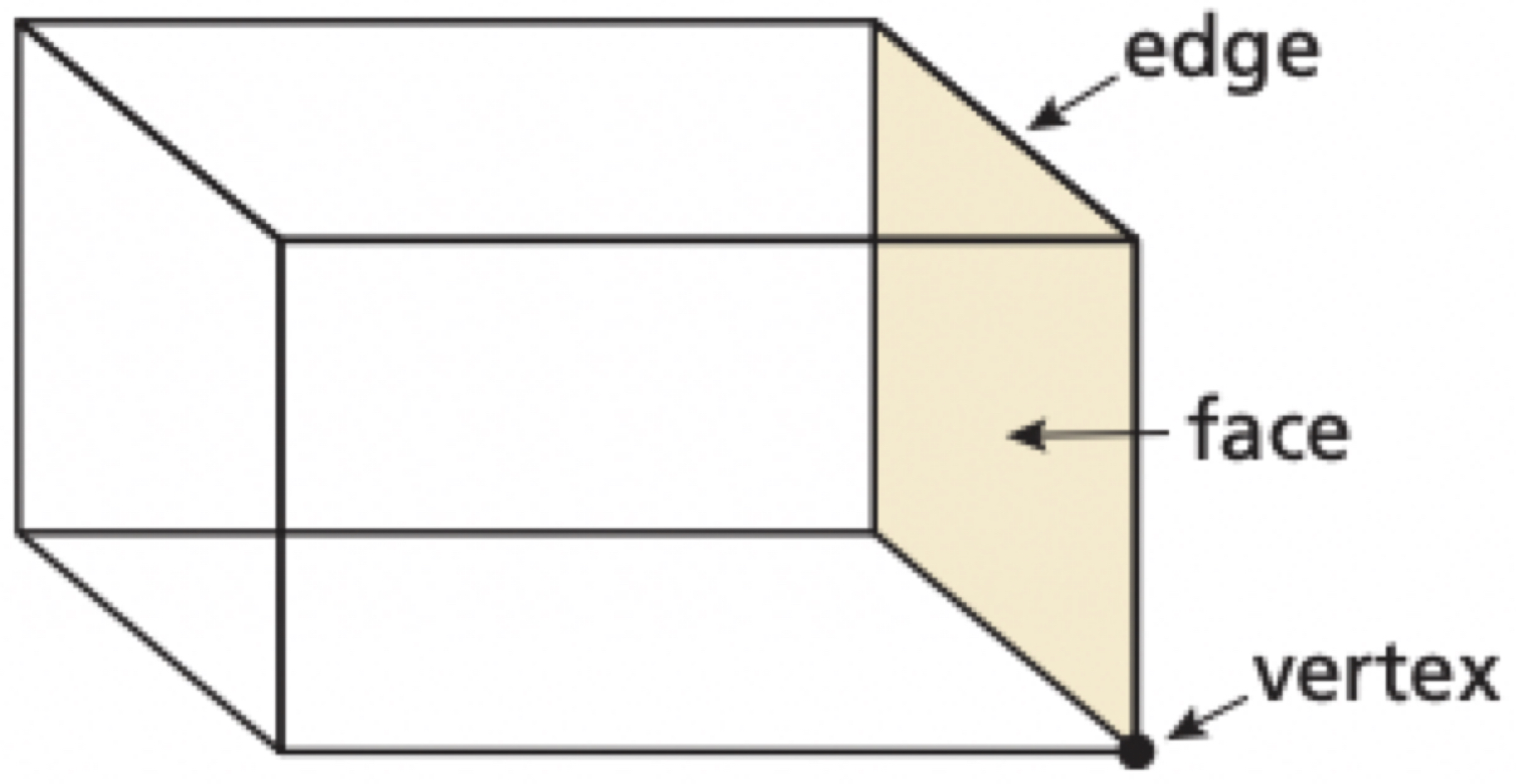
Polyhedra
Prism, pyramid

Not polyhedra
Cylinder, cone, sphere

The Five Platonic Solids
Solids that have congruent regular polygons as faces
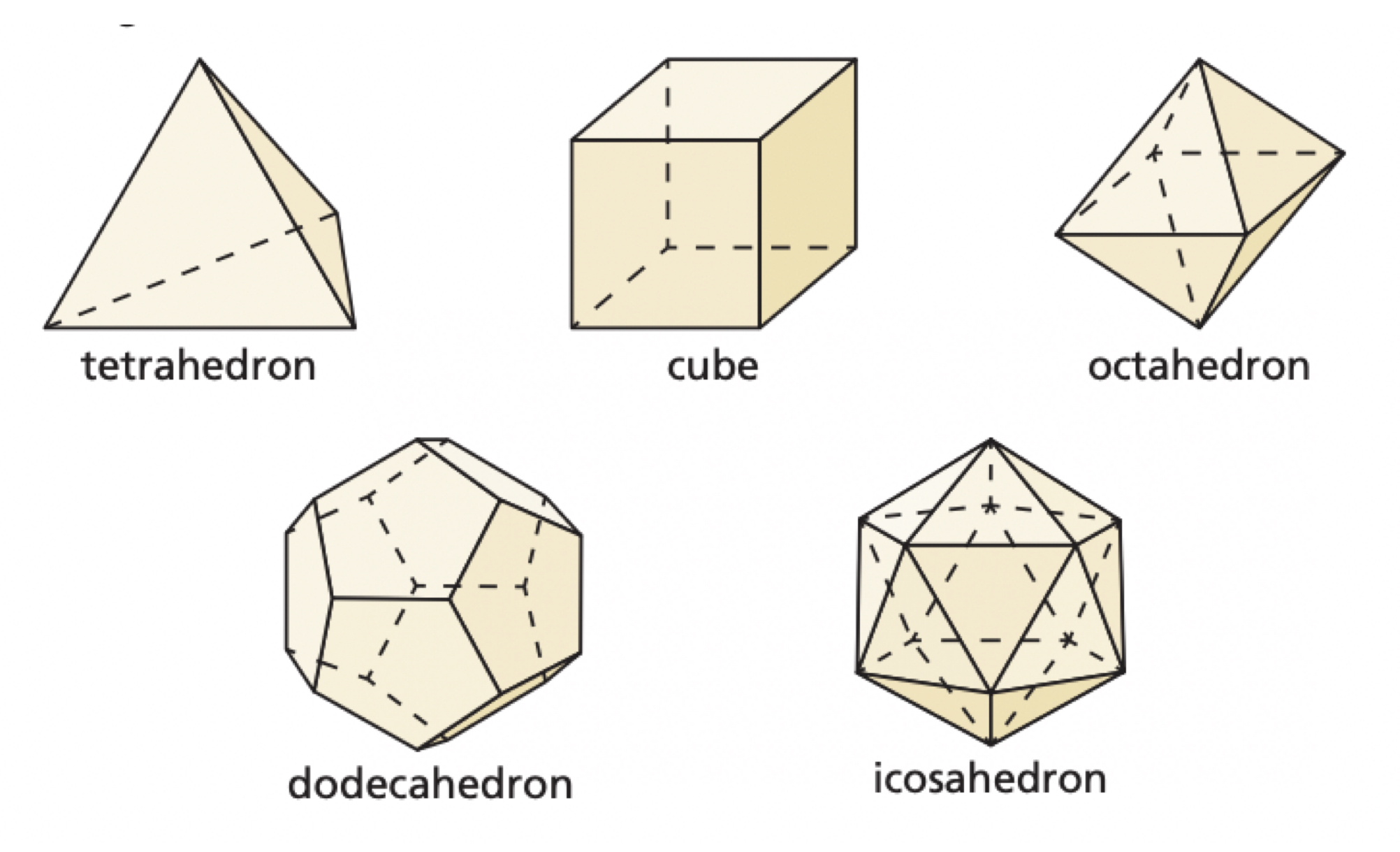
How many vertices, edges, and faces each Platonic solid has

How to name a prism or pyramid
Use the shape of its base
Cross section
The intersection of a plane and a solid

Volume of a Solid
The number of cubic units contained in a solid’s interior
Cavalieri’s Principle
If two solids have the same height and the same cross-sectional area at every level, then they have the same volume

Volume of a Prism
V=Bh where B is the area of the base and h is the height
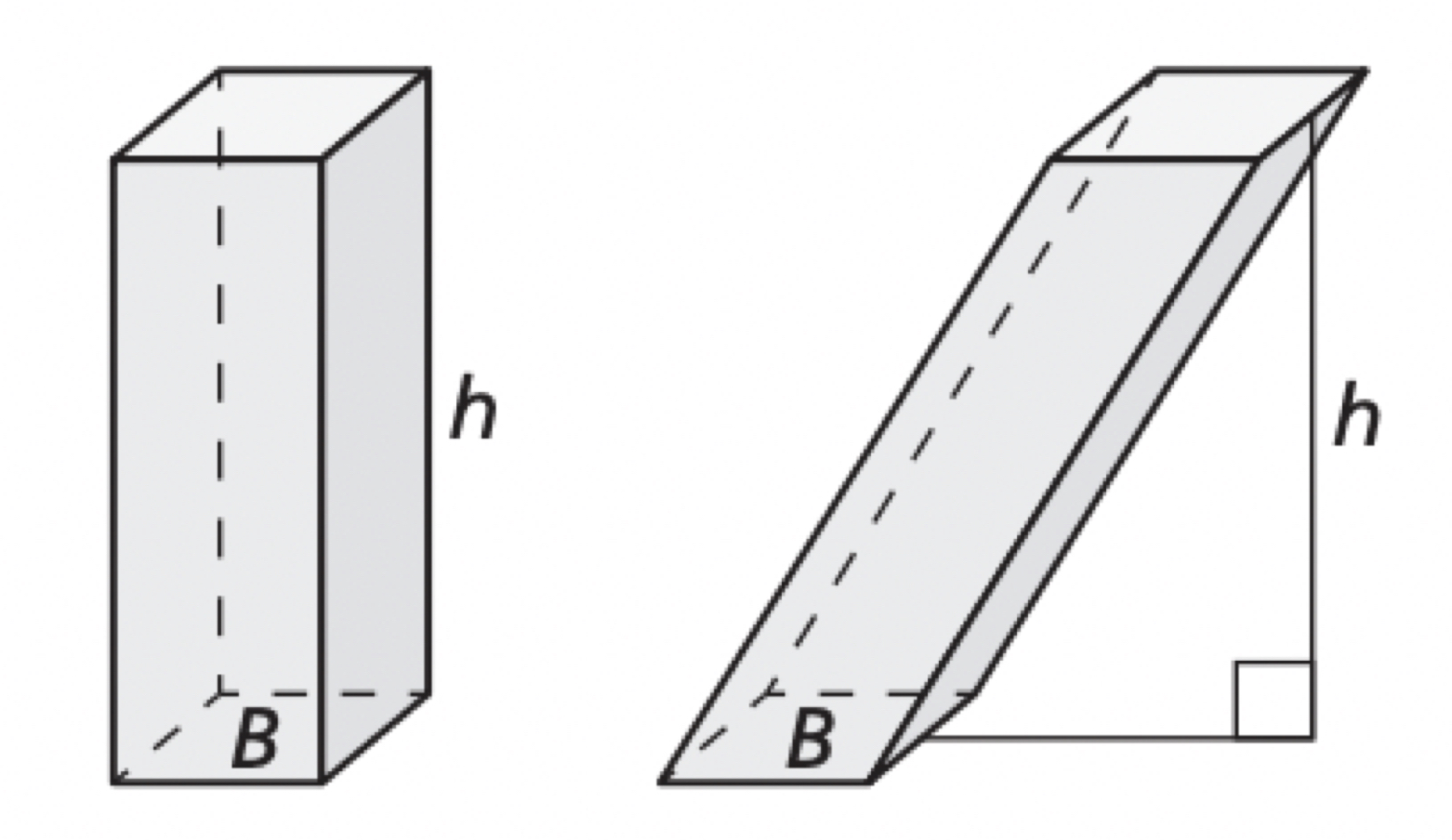
Volume of a Cylinder
V = Bh = πr²h where B is the area of the base, h is the height, and r is the radius
Density
The amount of matter that an object has in a given unit of volume (mass / volume)
Similar Solids
Two solids of the same type with equal ratios of corresponding linear measures, such as heights or radii. The ratio of the corresponding linear measures of two similar solids is called the scale factor. If two similar solids have a scale factor of k, then the ratio of their volumes is equal to k³
Parts of a Cone
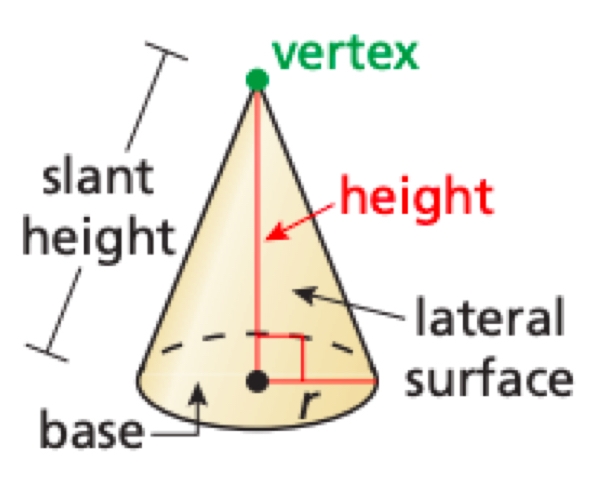
Surface Area of a Right Cone
S = πr² + πrl where r is the radius of the base and l is the slant height
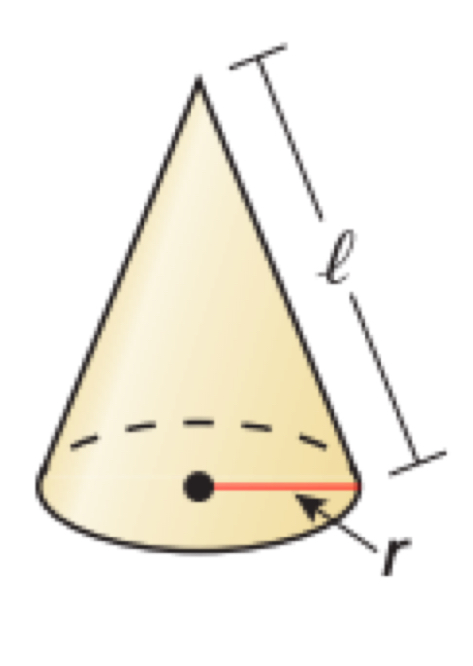
Volume of a Cone
V = 1/3 Bh = 1/3 πr²h

Surface Area of a Sphere
S = 4πr²
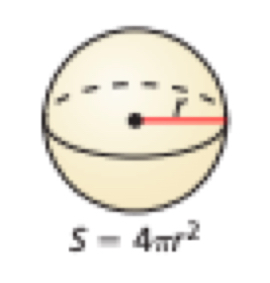
Volume of a Sphere
V = 4/3πr³
